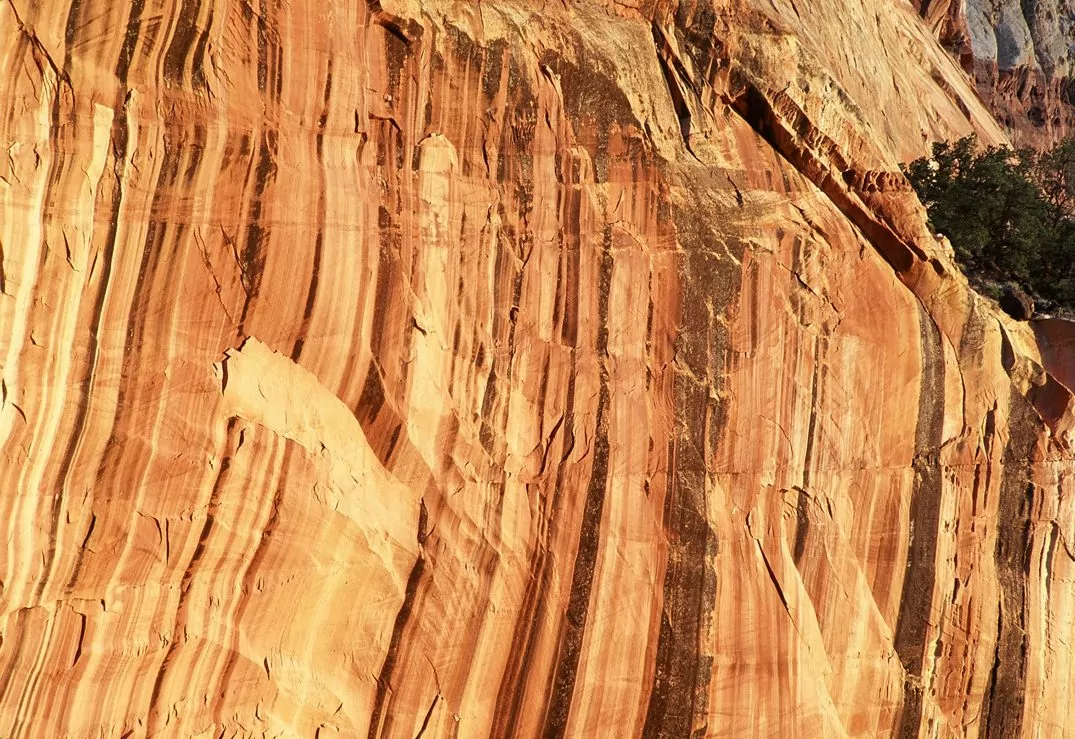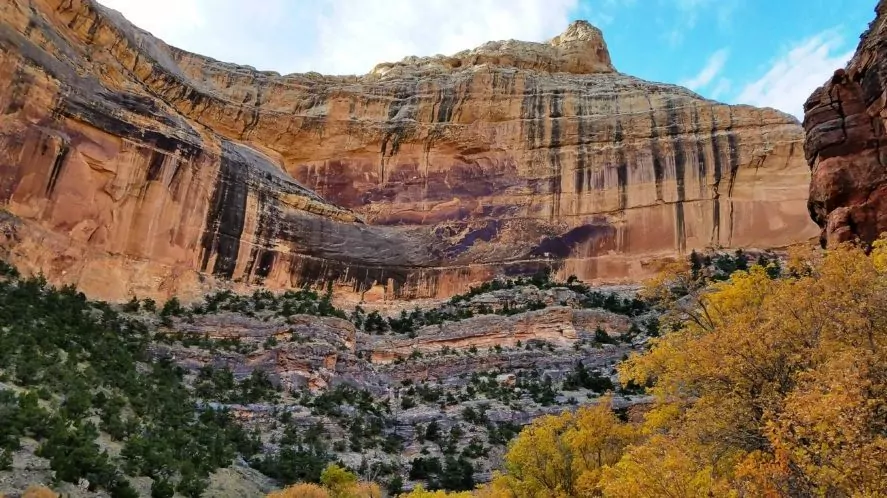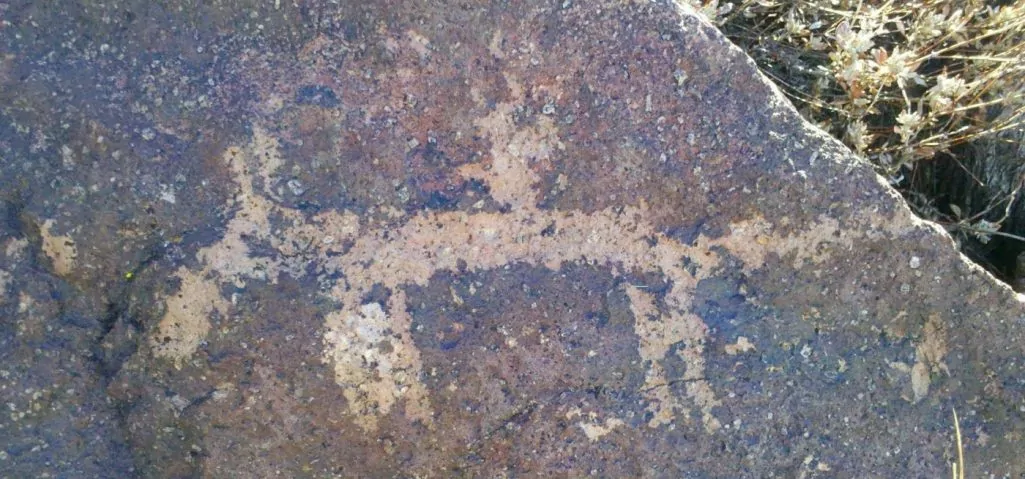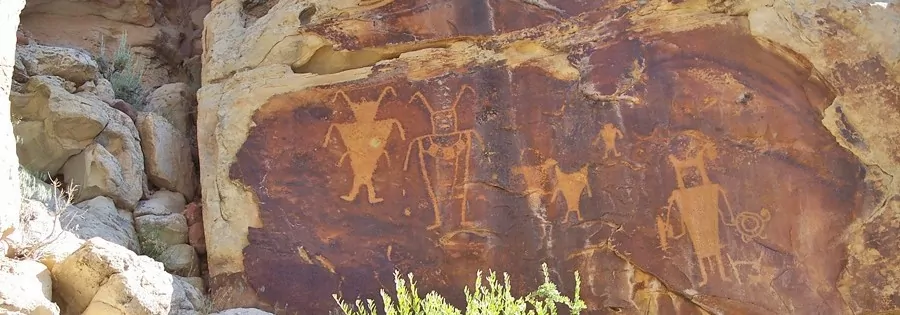Desert Varnish: What Is It and How Does it Form?

Hiking the labyrinthine canyons and corridors of the desert southwest invokes an air of awe and mystery. If you take a hiking vacation into the depths of the Grand Canyon or the slot canyons of Southern Utah, you will likely discover a puzzle that has baffled naturalists since the time of Charles Darwin. On the walls and atop the boulders along the trail, you might notice a dark coating. The color of this coating, known as desert varnish or patina, ranges from dark brown rust to a polished gunmetal blue.
Desert varnish may seem simple on the surface, but this natural phenomenon is a wonder worth a second look. So how does patina form and what can it tell us about the desert geology?
discover this natural wonder on a backpacking trip
The ingredients for desert varnish

When a rock surface is exposed to the air, it comes into contact with aeolian (wind-blown) dust. 50-90% of desert varnish is composed of wind-blown clay particles. The broken and decayed fragments of clay minerals provide the template for one of the most intriguing ingredients of desert varnish: Manganese Oxide. This relatively rare element makes up only about 0.12% of the weight of the crust.
Okay, so it’s rare, but is it really that intriguing? Well, the mystery that has plagued scientists is that the elemental concentrations of manganese found in desert varnish may be 50 to 300 times higher than the surrounding soil. The leading hypothesis for these high concentrations is the existence of tiny manganese-oxidizing microbes that live on the rock face. These microbes create concentrated amounts of manganese oxide which, when paired with oxidized iron particles found in the aeolian soil, cement the clay particles to the rock face. Thus, forming desert varnish.
How is desert varnish useful?
Even though the major components of desert varnish are manganese and iron, the coating is generally too thin to be mined in any useful fashion. But, there are other trace elements that become trapped in the clay particles. Scientists can study these trace elements to investigate changes in Earth’s climate because the layering formation of the Colorado Plateau provides a reliable timestamp to date any changes. For example, wetter environmental conditions form more manganese-rich layers and drier periods, more iron-rich layers. Some scientists also speculate that Martian rocks may contain desert varnish, suggesting alien life in the form of active colonies of microbes — or at least fossilized evidence.
Does all desert varnish look the same?

Some desert varnish may appear as a dull black or rusty brown coating. Some may have a glassy blue sheen. Generally, the blacker the varnish coating, the higher the concentration of manganese. When desert varnish appears glossy or shiny, it has been coated with a hardened gel-like coating of silica that leaches out of the rock.
How long does desert varnish take to form?

Although it has been extensively studied, desert varnish still creates a lot of uncertainties surrounding its formation. The underlying cause lies in the fact that the average rate of formation for desert varnish is (are you ready…) one MICROMETER per MILLENNIA! On average, it could take as many as 50,000 years for a coating of desert varnish the reach the thickness of a piece of paper. The lengthy process and extreme hardness of desert varnish (almost as hard quartz) make it a little difficult to reproduce in a lab setting. Indigenous tribes, however, took advantage of these qualities. They made perfect canvases out of the nice, flat rock surfaces. The native peoples would chip away the thin, dark coating of varnish to expose the lighter rock underneath, leaving behind images of spirals, bighorn sheep, warriors, and other petroglyphs (petro=rock, glyph=carving). Today, we can see these pieces of art that have lasted for hundreds and even thousands of year.

So now that you understand how desert varnish forms, keep your eyes out for this natural wonder the next time you find yourself hiking the desert. You may even find a message from the Ancestors. See desert varnish for yourself on any of our Southern Utah or Grand Canyon hiking vacations.




